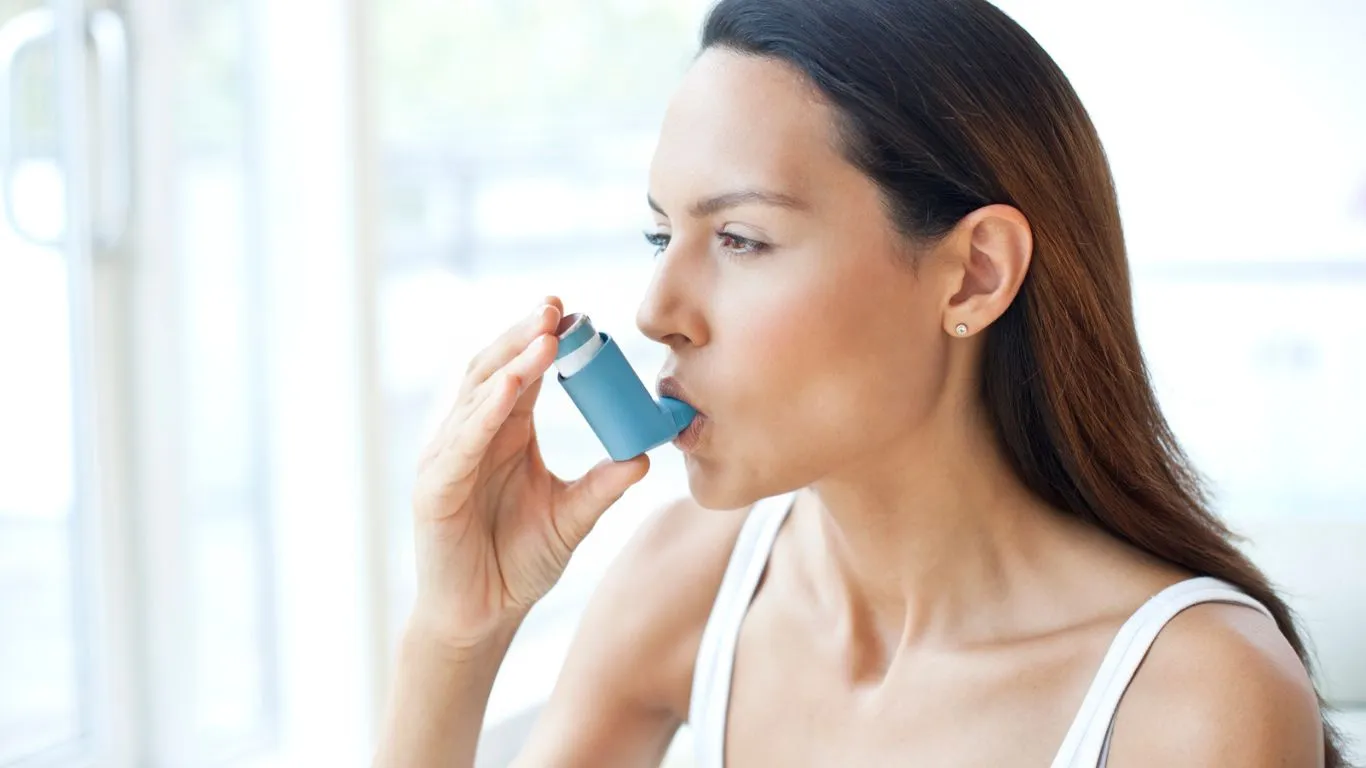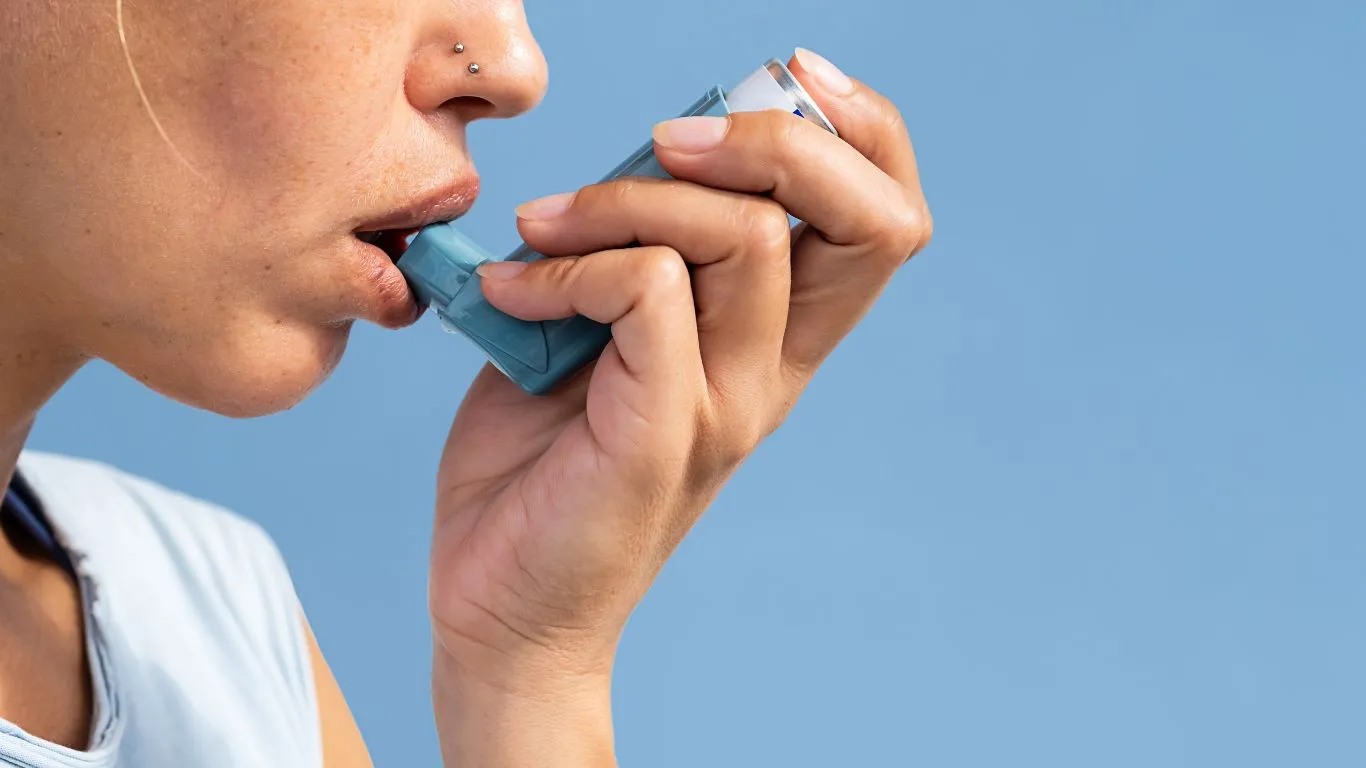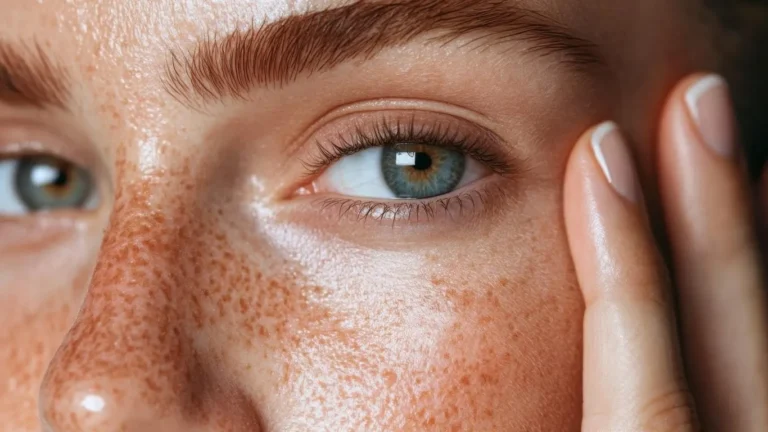How to Stop Asthma-Related Postnasal Drip Naturally and Effectively
If you’re anything like me—working in pulmonary care, seeing patients struggle with the annoying, never-ending drip in the back of their throat—you know how frustrating asthma-related postnasal drip can be. Whether you’re constantly clearing your throat, waking up feeling like you’ve swallowed cotton, or dealing with that tickle that turns into a coughing fit at the worst times, you’re not alone. I’ve been a Pulmonary Nurse for over a decade, and let me tell you, postnasal drip isn’t just a nuisance; it can really wear people down. Let’s dive into how to stop asthma-related postnasal drip using practical tips, real-world advice, and a little behind-the-scenes nurse perspective.
What’s Really Causing That Constant Drip?

First things first, let’s talk about what’s actually happening. When you have asthma, your airways are inflamed and extra sensitive. Add allergens, irritants, or even just a change in weather to the mix, and your nasal passages respond by producing more mucus. That mucus has to go somewhere—and spoiler alert—it heads straight down the back of your throat. That’s postnasal drip in a nutshell.
From my nursing experience, I’ve seen how postnasal drip can make asthma worse and vice versa. Patients often come in thinking it’s just allergies or a cold, but in reality, the inflammation from asthma is making the nasal symptoms linger longer than usual.
Common Triggers You Might Be Overlooking
You’d be surprised how many of my patients don’t realize what’s setting them off. Here are a few triggers that often fly under the radar:
- Dry indoor air – especially in winter
- Dust mites hiding in bedding and upholstery
- Perfumes or air fresheners – yes, even those “natural” ones
- Sudden weather changes (those warm-to-cold snaps wreak havoc)
- Acid reflux – big one here, it often disguises itself as postnasal drip
My advice? Start a simple symptom diary. Just jot down when the drip gets worse and what you were exposed to. You’ll start seeing patterns—and that’s gold when you’re trying to narrow down triggers.
How to Stop Asthma-Related Postnasal Drip Naturally

Alright, let’s get into the good stuff—what actually helps. You don’t always have to jump straight to steroids or fancy sprays. I’ve had patients swear by these simple, everyday tweaks:
1. Hydrate Like It’s Your Job
Seriously. This sounds basic, but staying well-hydrated helps thin out mucus, making it easier for your body to handle. I usually recommend patients aim for half their body weight in ounces of water a day. So if you’re 150 pounds, try getting in 75 ounces.
2. Use a Saline Nasal Rinse
One of the best things you can do—especially during allergy season—is flush out those nasal passages. A simple saline rinse or neti pot can remove irritants and reduce inflammation. Just make sure you’re using sterile water. Trust me, you do not want to mess with non-sterile water and your sinuses.
3. Sleep Elevated
Raise your head with a couple of pillows or use a wedge pillow. Keeping your upper body elevated can prevent mucus from pooling in your throat while you sleep. This trick alone has helped so many of my patients wake up without that dreaded morning cough.
4. Add Moisture to the Air
If your home is dry, especially during the colder months, a humidifier can make a huge difference. I usually tell folks to keep it around 40-50% humidity. Just be sure to clean it regularly—mold loves a dirty humidifier.
5. Try Anti-Inflammatory Foods
Believe it or not, your diet plays a big role in inflammation levels. Some great options to include:
- Ginger tea
- Turmeric (great in soups or smoothies)
- Omega-3-rich foods like salmon and flaxseeds
- Plenty of fruits and veggies—especially berries and leafy greens
I had one patient who swapped processed snacks for more whole foods and saw their drip symptoms decrease within a couple of weeks. It’s not a magic cure, but it definitely helps set the stage for healing.
6. Monitor for Hidden Reflux
Here’s a sneaky one: Laryngopharyngeal reflux (silent reflux) can mimic postnasal drip. If you’re waking up with a sore throat or a hoarse voice, it might not be from mucus alone. Cutting back on acidic foods (like tomatoes, coffee, and citrus) and not eating too close to bedtime can sometimes ease the drip.
When to See a Specialist

There’s no shame in asking for help. If your symptoms are persistent, getting worse, or affecting your sleep and breathing, it might be time to see a pulmonologist or ENT specialist. As someone who’s been in those consult rooms with countless patients, I can tell you—early intervention can save a lot of frustration (and Kleenex).
They might recommend allergy testing, asthma control reassessment, or even imaging to rule out sinus blockages. And don’t be afraid to advocate for yourself. You know your body better than anyone else.
Fine-Tuning Your Routine to Stop That Postnasal Drip

So, we’ve covered the basics in managing asthma-related postnasal drip—hydration, nasal rinses, dietary tweaks. But what about the small stuff that adds up? Over the years, working with asthmatic patients, I’ve noticed that success often lies in the little daily habits. It’s not just what you do when symptoms flare up—it’s what you do consistently that really matters.
Let me walk you through some real-life adjustments that have worked wonders for my patients—and frankly, for me too when I catch myself in the drip cycle.
Don’t Skip Your Preventive Asthma Meds
It might sound obvious, but you’d be surprised how many people start skipping their inhalers when they feel “okay.” Asthma isn’t just about those big flare-ups. The underlying inflammation is what leads to issues like postnasal drip. Daily inhaled corticosteroids keep that inflammation in check and help stabilize your whole respiratory system.
One of my long-time patients once told me, “I only use it when I wheeze.” Fast forward to chronic drip, throat clearing, and interrupted sleep. Once she got back on a steady controller medication, the nasal symptoms backed off, too. That’s how connected it all is.
Clean Up Your Environment (More Than You Think)
If I had a dollar for every time a “clean” home turned out to be a dust bomb… I’d have a solid side hustle. Even when things *look* clean, allergens hide everywhere—especially in carpets, drapes, and pillows.
Here are a few tweaks I recommend regularly:
- Use allergen-proof pillow and mattress covers
- Wash bedding weekly in hot water
- Vacuum with a HEPA filter (and do it regularly!)
- Keep windows closed on high pollen days
- Consider ditching scented candles or plugins—they’re often big irritants
Your sinuses and lungs will thank you. I’ve had patients with a 180° turnaround just from investing in a better vacuum or an air purifier.
The Role of Sleep and Stress in Asthma-Related Postnasal Drip

Let’s get real for a second: Sleep and stress are the unsung villains when it comes to respiratory health. I’ve noticed that even when patients are doing “everything right” symptom-wise, their drip flares up when they’re running on fumes or overwhelmed.
Stress = Inflammation
It’s not woo-woo; it’s science. Stress raises cortisol levels, which can mess with your immune response and increase inflammation. And more inflammation means more mucus. It’s a vicious cycle.
Some stress-busters I often recommend (and use myself!):
- Breathwork exercises (box breathing is a favorite of mine)
- Gentle yoga or stretching before bed
- Even a 10-minute walk outside does wonders
- Cutting back on screen time—especially news or doomscrolling at night
Sleep Hygiene for Drip Relief
Good sleep doesn’t just help you feel rested—it helps your immune system regulate properly. Here’s how to make your bedtime routine postnasal-drip-friendly:
- Elevate your head with a wedge pillow or stacked pillows
- Use a humidifier if the air’s dry (but clean it often!)
- Avoid heavy meals and dairy right before bed—they can make mucus worse
- Try nasal strips to open your passages (they’re a game-changer for some folks)
I’ve had patients report fewer nighttime coughing fits just by propping themselves up and cutting out their nightly cheese snack. Sometimes it’s that simple!
Can Postnasal Drip Be a Sign Your Asthma Isn’t Controlled?

Here’s a question I get a lot in clinic: “Is this constant mucus just a side effect of asthma, or a red flag?” And honestly, it can be both.
In many cases, persistent postnasal drip means your asthma may not be as under control as it could be. If you’re using your rescue inhaler more than twice a week, waking up coughing, or finding that mucus is a daily companion—it’s time to reassess your asthma action plan.
What I Look For in Assessing Asthma Control:
- How often you’re using short-acting inhalers
- Nighttime symptoms (this one’s big)
- Activity limitations due to symptoms
- How often you need oral steroids
If you’re nodding along to most of those, don’t wait. Schedule a visit with your healthcare provider. There are newer medications and personalized treatment plans now that weren’t available even five years ago. I always tell my patients—you shouldn’t just “live with it.” There’s help out there.
Consider a Peak Flow Meter
This is a fantastic tool for tracking how well your lungs are doing day-to-day. You can pick one up at most pharmacies, and it gives you real-time data. If you notice a trend of lower numbers during heavy postnasal drip days, that’s good information to share with your doctor.
Let’s Talk About Mucus—Because It’s Not All the Same

Yes, we’re going there. Because the color, thickness, and frequency of your mucus can tell you a lot about what’s going on. I’ve seen many patients panic over mucus color, thinking green = infection every time. Not always!
Here’s a quick cheat sheet:
- Clear or white: Normal or allergy-related
- Yellow or green: Possibly a viral or bacterial infection—but not always!
- Thick and sticky: Often from dehydration or chronic inflammation
- Pink or red-tinged: Could be from dryness or irritation (but mention it to your doc)
Bottom line? Don’t self-diagnose. If your mucus changes drastically or comes with fever, fatigue, or sinus pain—it’s time to get it checked out.
Pro Tip: Use a Mucus Journal
Okay, I know this sounds weird, but it’s wildly helpful. Jot down the color, consistency, and how often you’re clearing your throat or blowing your nose. Over time, you’ll start to see patterns—like flare-ups after eating dairy or worse symptoms when it’s dry outside.
Medical Treatments That Help Tackle Asthma-Related Postnasal Drip

Now, let’s talk about something that I get asked a lot in the clinic: “What medications can help me with asthma-related postnasal drip?” While we’ve already covered some great natural approaches, there are times when you might need a little extra help from medications to get things under control. Let’s go through some options that can make a difference.
Inhaled Corticosteroids (ICS)
For anyone with asthma, inhaled corticosteroids (ICS) are the cornerstone of treatment. These help keep the inflammation in your airways in check, which, as we’ve discussed, directly impacts postnasal drip. I’ve seen patients’ symptoms improve significantly just by ensuring they’re using their inhalers regularly, even when they’re feeling well. It’s about keeping that baseline inflammation under control to prevent those drip flare-ups.
If your asthma is well-controlled, this might mean less reliance on quick-relief inhalers, and in turn, fewer problems with excess mucus.
Antihistamines and Decongestants
If your postnasal drip is allergy-driven, antihistamines may be your best friend. They can reduce the swelling in your nasal passages and cut down on the mucus production. I often suggest non-drowsy versions during the day, like loratadine or cetirizine. They help without making you feel sluggish.
Decongestants can be helpful as well, but I’d suggest using them sparingly. Overuse of nasal sprays or oral decongestants can lead to rebound congestion, making things worse in the long run. I always warn my patients about this, especially if they’ve been tempted by those “quick-fix” nasal sprays.
Leukotriene Modifiers
If you’re someone who struggles with both asthma and allergic rhinitis, leukotriene modifiers, like montelukast, may be an option. These medications help reduce inflammation in the airways and nasal passages, so they’re helpful if you’re dealing with that pesky postnasal drip. I’ve seen many patients who have found a significant reduction in their drip symptoms after adding this to their asthma treatment plan. Always discuss it with your doctor, of course!
Sinus Treatments
Sometimes the postnasal drip comes from sinus issues rather than allergies or asthma inflammation. In that case, nasal corticosteroid sprays or saline irrigation might help. I’ve had patients who found relief from a simple saline rinse, and some who needed stronger prescription nasal sprays to really clear things up. If your drip is accompanied by sinus pressure or pain, it’s worth mentioning this to your doctor for further evaluation.
When Should You Seek Further Evaluation?

There are times when you need to take a step back and get a more in-depth evaluation from a specialist. Here’s when I suggest not waiting any longer and scheduling that appointment with your pulmonologist or ENT specialist:
- Persistent Symptoms: If your postnasal drip just won’t quit, despite trying all the usual remedies, it’s time to check in with your healthcare provider.
- Frequent Coughing or Wheezing: If your asthma symptoms are worsening—like more frequent coughing, wheezing, or shortness of breath—it could mean your asthma isn’t as well controlled as it should be.
- Sinus Infections: Recurrent or chronic sinus infections may require treatment that goes beyond what you can manage at home. If your drip seems to be linked to sinus congestion that just won’t clear, it’s best to seek professional advice.
- Fatigue and Sleep Disturbances: If your symptoms are keeping you awake or making you tired all the time, it’s worth investigating. Poor sleep can affect asthma control and overall well-being, so don’t let it go on for too long.
What to Expect During Your Appointment
When you see a pulmonologist or an ENT, they’ll take a detailed look at your symptoms and may perform tests like:
- Allergy tests to check for triggers
- Pulmonary function tests to assess asthma control
- Sinus imaging (like a CT scan) to rule out sinus issues
- Referral for a nasal endoscopy if needed
By taking a holistic approach, your doctor can get a clearer picture of what’s going on and suggest the most effective treatment plan for you.
Preventing Postnasal Drip: A Long-Term Approach
As I’ve mentioned throughout this article, there’s no one-size-fits-all solution when it comes to asthma and postnasal drip. Managing the condition effectively requires a combination of lifestyle changes, medication, and being proactive with your asthma care plan.
As a Pulmonary Nurse, I always emphasize the importance of monitoring your asthma symptoms closely—this includes tracking your postnasal drip. Keep an eye on when it worsens, and what lifestyle or environmental factors might be contributing. This will help you and your healthcare provider find the best strategy for long-term relief.
Additionally, it’s essential to focus on managing your asthma with a full-range treatment plan. While postnasal drip is one uncomfortable symptom, keeping your asthma in check will reduce the frequency and severity of the drip. Proper asthma management, good sleep habits, hydration, and avoiding irritants are all vital pieces of the puzzle.
References
Disclaimer
The information in this article is not intended as medical advice and is based on my experience as a Pulmonary Nurse. Always consult with your healthcare provider before making changes to your treatment or healthcare routine. Each individual’s needs may vary, and professional medical evaluation is essential for accurate diagnosis and appropriate treatment.

Bianca Nala is a compassionate Nurse Practitioner with a strong background in primary and respiratory care. As a health writer for Healthusias.com, she combines her clinical expertise with a talent for clear, relatable storytelling to help readers better understand their health. Bianca focuses on topics like asthma, COPD, chronic cough, and overall lung health, aiming to simplify complex medical topics without losing accuracy. Whether she’s treating patients or writing articles, Bianca is driven by a single goal: making quality healthcare knowledge accessible to everyone.






